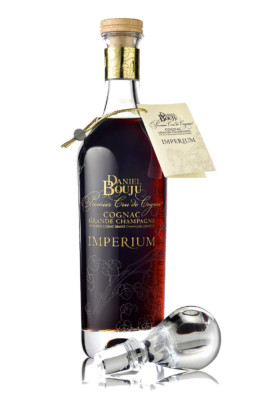The bottles of the great cognac houses are one of the most spectacular supports in glass engraving. However, the bottle was hidden for a long time or too fragile to be engraved. Focus on this discreet and yet elegant glass object!
Laborious Beginnings
It was not enough to master glass or crystal to see the birth in glass workshops of superb bottles useful as much in the service of water as that of alcohol. The glass was fragile and the possibilities of making the closure of the bottle almost non-existent. Nothing very engaging for the conservation of wines. Especially since the latter, until the 19th century, quickly turn to vinegar, it is therefore absolutely necessary to consume it within six months of the harvest.
During Antiquity and the Middle Ages, the bottle was therefore not yet used for conservation and it was preferred to serve on table.
The Orient, absolute master of glass art, supplies the Mediterranean basin with elegant decanters and bottles of beautiful translucent glass, and sometimes colored, but not yet perfectly transparent. But as we move into the Middle Ages, Europe forgets the intricacies of this ancient technique. Decanters and bottles, which have become fragile and dull, hide in clissages or leather cases which protect them from inevitably fatal shocks. If the most luxurious productions are distinguished by glass caps, most can be closed with a simple piece of fabric and care must therefore be taken to transport them vertically at the risk of dispersing the contents!
It is in part this necessary precaution as well as the technical knowledge of the time that are responsible for the ancient and sometimes comical shapes of these medieval bottles. Spherical and flattened, onion or pear shaped, bottles and decanters straight out of our history books also served as gourds and their shapes, as far as the glassmaker was then capable, were copied from the shapes of the decanters and silver flasks.
Yet in the Orient of the same period, the same glass objects are still of remarkable quality, far superior to those then made in Europe. In the 17th century, moreover, Persian wine from Shiraz was transported in superb bottles of colored and solid glass when our European wine had to adapt to barrels.
European Innovations
An English invention of the 1640s will profoundly change the history of the bottle and in particular that of wine conservation.
While developing a thick black glass in a London workshop, an English eccentric by the name of Kenelm Digby (1603 – 1665) surely did not take the measure of his invention. Thanks to this opaque glass capable of protecting the container from light, a first step is taken towards better conservation of the wine. A few years later, the rediscovery of the cork marks a further step in the history of the bottle. From now on, the risks of breakage are minimized but above all the dark glass and the cork make it possible to preserve the wine, impossible until then. As long as the ideal conditions are met in the cellar, a bottle of wine can now age without the risk of turning to vinegar. Better! Aged wine develops particular aromas.
The formerly pot-bellied shapes are lengthening and becoming truncated thanks to this new black glass, more malleable and solid, facilitating transport in crates and announcing the disappearance of transport in barrels …
British connoisseurs and great lovers of Bordeaux wines use their invention to easily transport the wine productions they bring back from the southwest of France and taste in England. We even know an Irishman who, in 1723, opened a glass factory in the Chartrons district of Bordeaux. He thus supplies the wine merchants of the district, who naturally find their account there: the wine is protected in an opaque, well-sealed bottle with a guaranteed capacity to avoid fraud. If already in England, the bottles are starting to be stamped with the name, the coat of arms of their owner or the year of the cuvée, in Paris this revolution of gourmets is underway!
Under the Empire, the elites are now reluctant to buy in barrels, preferring the bottles that the new Russian-style service allows to be displayed on the table. That of Joséphine de Beauharnais and especially her cellar in Malmaison are a brilliant illustration of this new way of consuming wines.
The Bordeaux bottle, also known as Frontignan – with a great future – was born at this time. Glass art then took on a considerable scale. Since glasses, decanters and bottles are now placed on tables and no longer on sideboards along the walls, it is in the best taste to get hold of sumptuous objects in crystal or in Bohemian cut glass and engraved with fashionable patterns or the owner’s monogram. One likes to observe and discuss the color of the wine in his glass but the bottles must imperatively remain dark and opaque for obvious reasons of conservation.
Spirits’ bottles do not have the same requirements as bottles of wine. Cognac, armagnac, whiskey, gin or rum age in barrels for many years before they can be enjoyed. Once sufficiently patinated by time, it is no longer necessary to keep them away from light and their bottling can then be the subject of aesthetic attention. Because the beauty of the colour often plays an important part in the tasting. The choice of connoisseurs naturally goes to exceptional and unique bottles and decanters.
MSV has thus distinguished itself as the benchmark partner of the great wine and spirits houses: bespoke engravings, exceptional bottles and presentation boxes place your wines and spirits at the center of attention, offering them an unprecedented scale. .
Do you have a project on glass or crystal? An event to celebrate? Contact us and let’s discuss it!



